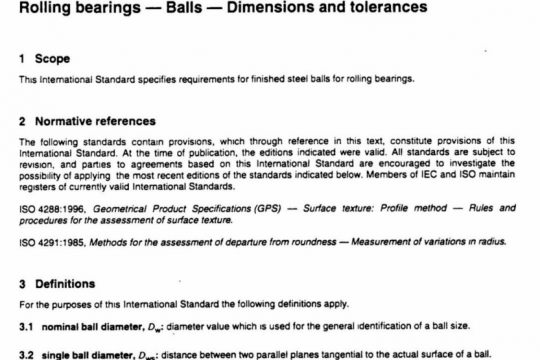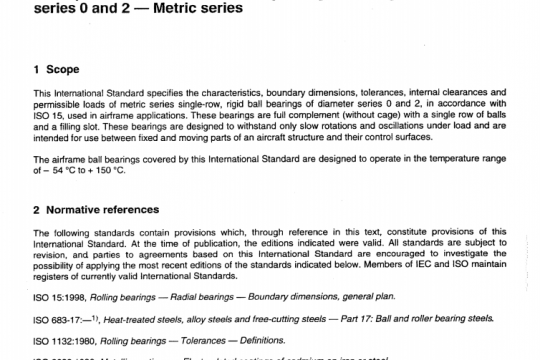ANSI ABMA 9:2015 pdf free
ANSI ABMA 9:2015 pdf free.Load Ratings And Fatigue Life For Ball Bearings
Even if ball bearings are properly mounted, adequately lubricated, protected from foreign matter, and are not subjected to extreme operating conditions, they can ultimately fatigue. Under ideal conditions, the repeated stresses developed in the contact areas between the ball and the raceways eventually can result in fatigue of the material which manifests itself as spalling of the load carrying surfaces. In most applications the fatigue life is the maximum useful life of a bearing. This fatigue is the criterion of life used as the basis for the first part of this standard.
Fatigue life calculated in accordance with this standard does not represent the maximum that can be attained by applying all known technology to ball bearing design and application. Neither does it represent the minimum that should be expected of a bearing made by a producer lacking skill and experience in the design and manufacture of ball bearings, even though the bearing meets the geometric parameters given below. The calculated fatigue life represents the performance normally expected from high quality bearings made by reputable manufacturers. Manufacturers can supply longer lived bearings by the application of advanced materials and manufacturing processes. The present standard has evolved as a means for bearing users to specify a reasonable standard of performance for the bearing they wish to purchase.
Experience shows that a total permanent deformation of 0.0001 of the rolling element diameter, at the center of the most heavily loaded ball/raceway contact, can be tolerated in most bearing applications without the subsequent bearing operation being impaired. The basic static load rating is, therefore, given a magnitude such that approximately this deformation occurs when the static equivalent load is equal to the load rating.
The permissible static equivalent load may be smaller than, equal to or greater than the basic static load rating, depending on the requirements for smoothness of operation and friction, as well as on actual contact surface geometry. Bearing users without previous experience of these conditions should consult the bearing manufacturers. ANSI ABMA 9 pdf free download.




